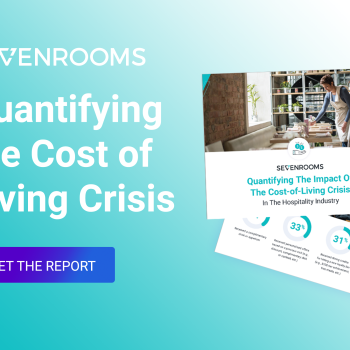A new CommBank iQ Cost of Living Insights Report has shown that while cost-of-living pressures are evident in spending changes in several categories of essential and discretionary spending, dining out, travel/accommodation and entertainment have all increased.
The report used aggregated and de-identified payments data from seven million CBA customers to track spending trends. It is Australia’s largest consumer payments data set.
Changes in spending behaviour in response to inflation, interest rate rises and rent increases, has shown that Australians aged 30-34 and people renting their homes are feeling the most pressure from the rising cost of living.
However, while essential everyday expenditure has been reduced (comparisons are made between spending in the first quarter of 2022 and the same period in 2023) as well as in discretionary spending categories like apparel and household goods, the big outlier is categories related to experiences.
Eating out and food delivery spend has increased by 8.5 per cent, entertainment is up by 10.8 per cent, and travel and accommodation is up by 39 per cent – even when taking into account national average inflation of 7 per cent over the 12-month period.
“Putting our expenditure under the microscope shows we’re responding to the increased cost of living in diverse and sometimes unexpected ways,” commented the report’s author, CommBank iQ Head of Innovation and Analytics Wade Tubman.
“What we’re seeing is a continued Covid rebound effect, with consumers catching up on the experiences that they missed out on during the pandemic. It seems counter-intuitive that at a time of increased cost of living pressures, consumers are choosing to boost their discretionary spending.”
Dining out fuelled by over 35s
However the findings of the report show that there is a clear contrast in this boost of discretionary spending between older and younger people. Younger Australians, who typically earn less, have had to cut back on expenditure more than their older counterparts.
Overall annual spending by those aged over 35 has increased by 7.7 per cent, almost double the 3.4 per cent increase in spending by those under 35. Australians aged 25-29 show the largest reduction in expenditure, while 18-24 year olds have sustained their spending in real terms, with many still living with their parents. Young people are choosing to go out less, although their average spend on these occasions has increased.
Dining out is one of the key contrasts between younger and older Australians. Adjusted for inflation, under 35s are spending the same on dining out that they did 12 months ago, but over 35s have actually increased their spend by 11 per cent.
In a briefing on the report, Tubman mentioned that across categories one of the levers that consumers are pulling to relieve some of these cost pressures include ‘trading down’ in the categories of spend. In terms of dining out, that means consumers are choosing casual eateries with lower price points over fine dining.
Cost of living pressure increasing
The report’s ‘Cost of Living Pressure Indicator’ – which measures changes in an individual’s total and discretionary spending – has risen sharply and is positioned to increase further. Sitting at a score of +3 in December 2022, the Commbank iQ’s Cost Of Living Pressure score has steadily risen to +9 currently, with further increases predicted as the lagged impact of higher interest rates and increased mortgage rates begins to be felt by homeowners.
“The cost of living pressure score has started to rapidly pick up since Christmas and certainly the trends are that financial pressure will continue to rise. The Reserve Bank’s decision to increase the cash rate by 0.25% to 3.85% on 2 May will add to these pressures,” stated Tubman.
The report shows that people aged 30-34 are feeling the most pressure, as well as single- and double-income households with no children. Renters are also feeling significant pressure. Looking at Sydney and Melbourne postcodes, figures show that geography plays very little part in the increase in pressure, with a significant jump in pressure for most areas of metropolitan Sydney and Melbourne.
CommBank iQ is a joint venture between Commonwealth Bank of Australia and data science and artificial intelligence company Quantium.



